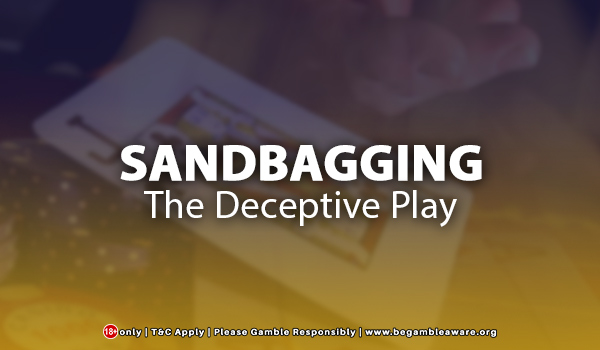Sandbagging: The Deceptive Play
The popularity of casino games has shown an incremental and exponential increase in the 21st century because of its accessibility and open legislation that has allowed a larger number of players to enjoy the services provided by the same. With the Internet booming in the 21st century and the advent of online casino games penetrating the industry, the accessibility to such games became even simpler and evidently was scaled up. ‘Sandbagging’ was just one of the tactics that were employed as a strategical move in the gameplay. The reason being that players, professionals, and gamblers found this scope as a chance to earn more decent monetary incentives out of the gameplay. Like many other strategies, this move can prove to be quite beneficial if played the right way!

‘Sandbagging’ – a deceptive play of strategy:
It is a deceptive play that is used as a tactic to gain a strategic edge over opponents on the table. It is basically opposite of another famous move called ‘Bluffing’. In this deceptive move, the player tries to fool his opponents into believing that he is at a worse position with a weaker hand, than he actually is! The player deliberately makes weak attempts at betting, even if the received hand is quite strong otherwise.
Implications of Sandbagging:
The deliberate attempt at placing weak bets over strong hands dealt befools opponents to keep on betting. The opponents keep on betting on scenarios where they would have otherwise been tempted to fold in. The strategy also involves opponents to increase their bets whenever the sandbagging player raises his/her bets too. This may lead to them earning more than if the opponents on the table would have bet less or folded in, in a typical scenario.
Tips to improve the strategy of implementing sandbagging:
Like any other strategy, this move is just not as simple as it may seemingly sound as. It needs vigorous practice and requires focus on the part of the executioner as well. A few needed tips to be followed in its execution includes the player having a strong hand in the first place. The second thing to consider is the pot value, which should still be small enough yet have the potential to grow eventually if all players stay in. The player must not play too aggressively which might send a false alarm to his opponents as well. The player must also figure out that there might be a possibility of at least one opponent who has the second-best hand dealt to him/her.
Sandbagging explained in a game scenario:
Let suppose in an ideal game, a flop consists of a king, a jack, an eight, a player dealt with two aces might try to deceive opponents by placing small bets. Assuming that the opponent has a king and him believing that the player has low-value cards dealt to him, the opponent might choose to increase the stakes and thus, building the pot value. The pot value can be further increased where the player continues to call his opponent with the aim of building the pot. And thus, the player receives the advantage when the pot value is high enough to then play the winning move!
Also known as ‘Slow Playing’ or ‘Trapping’, this move has a lot of potential in deceiving players into believing a false motive. The move can be tweaked around a bit, dependent upon the experience and agility from the part of the player as well.

